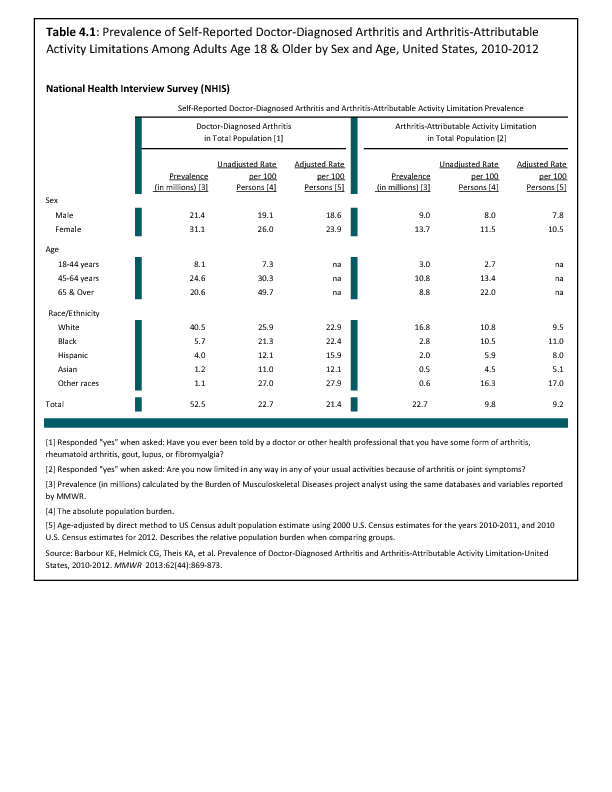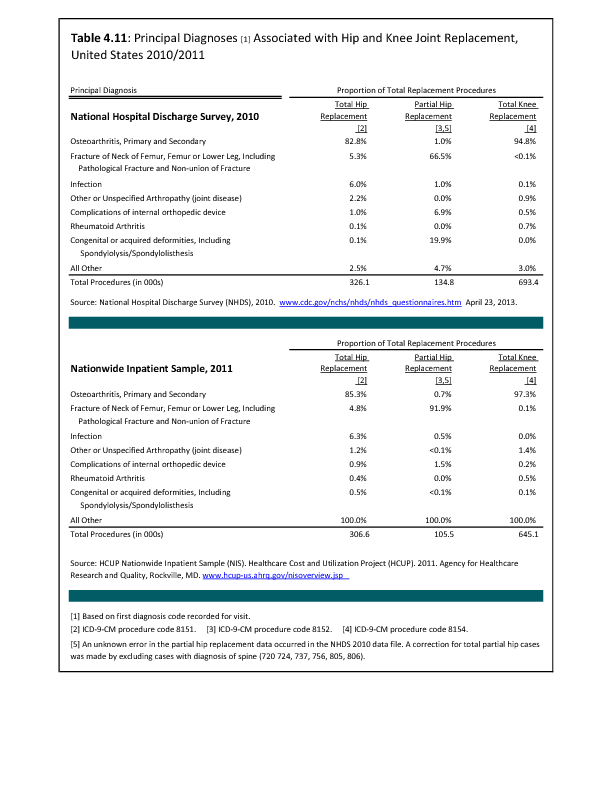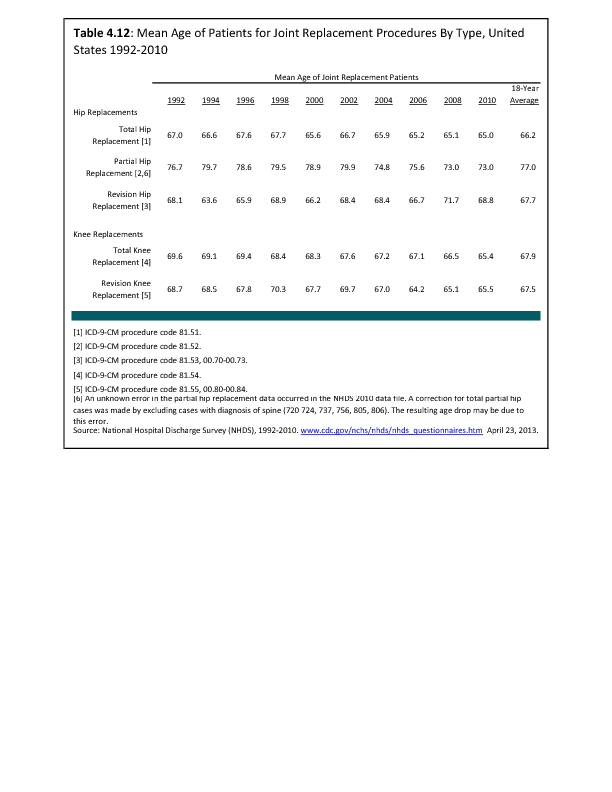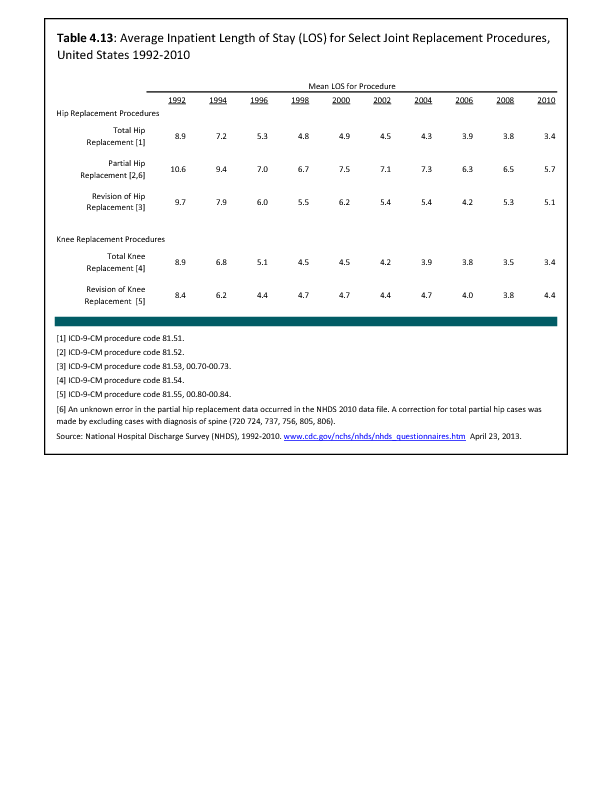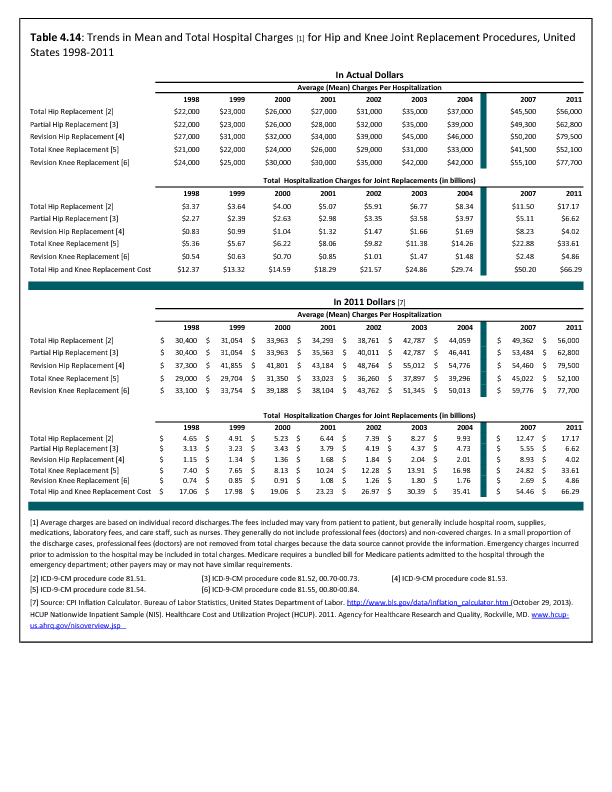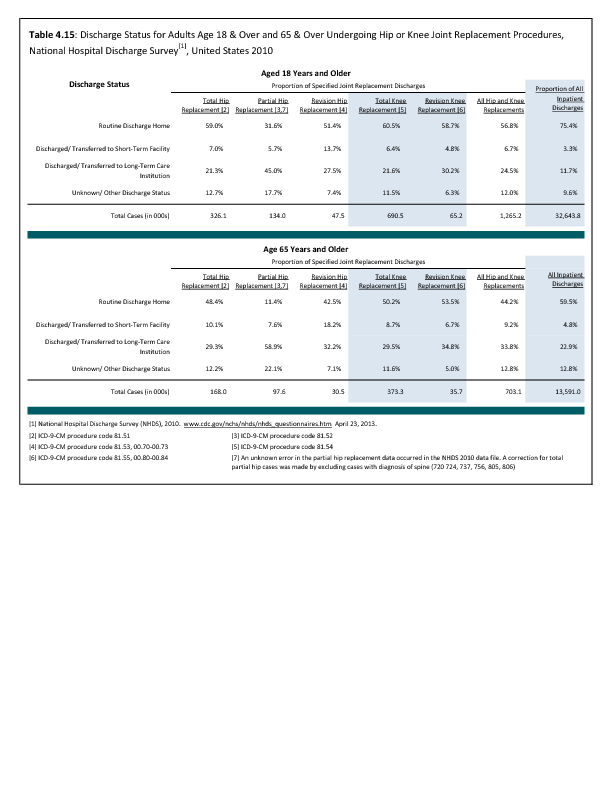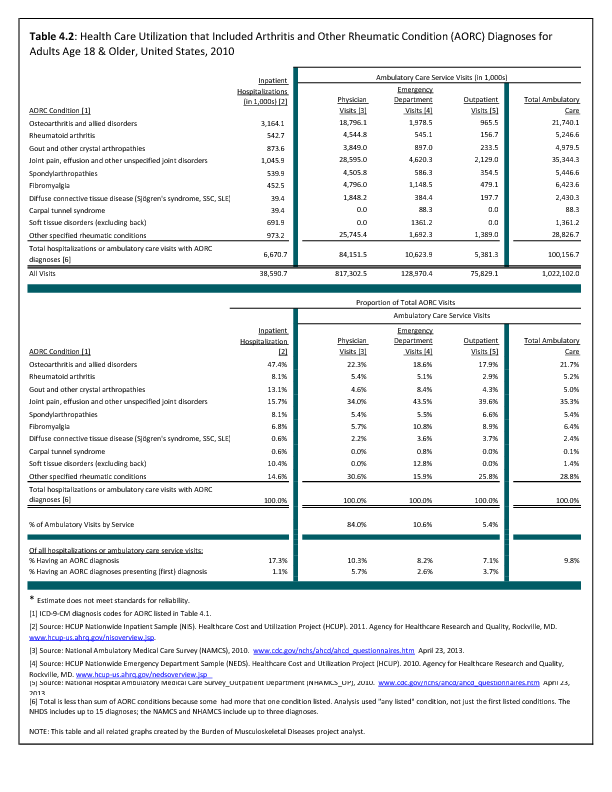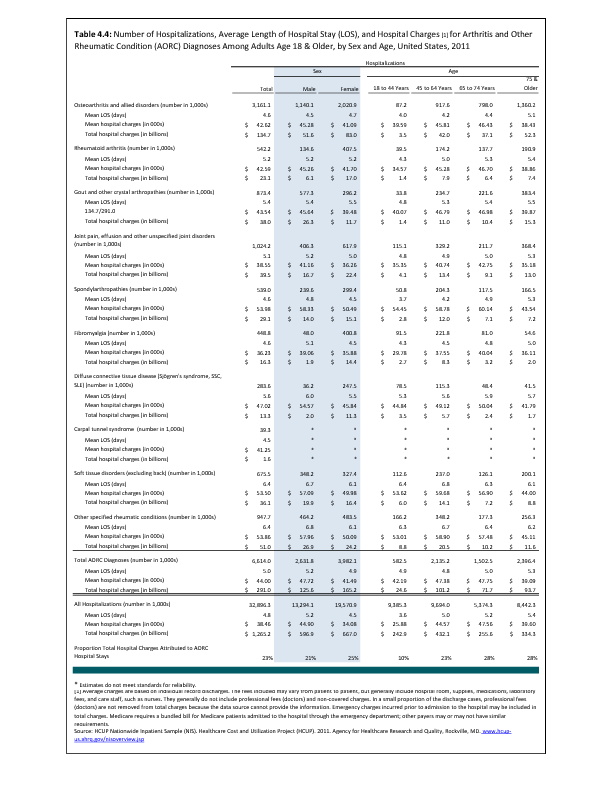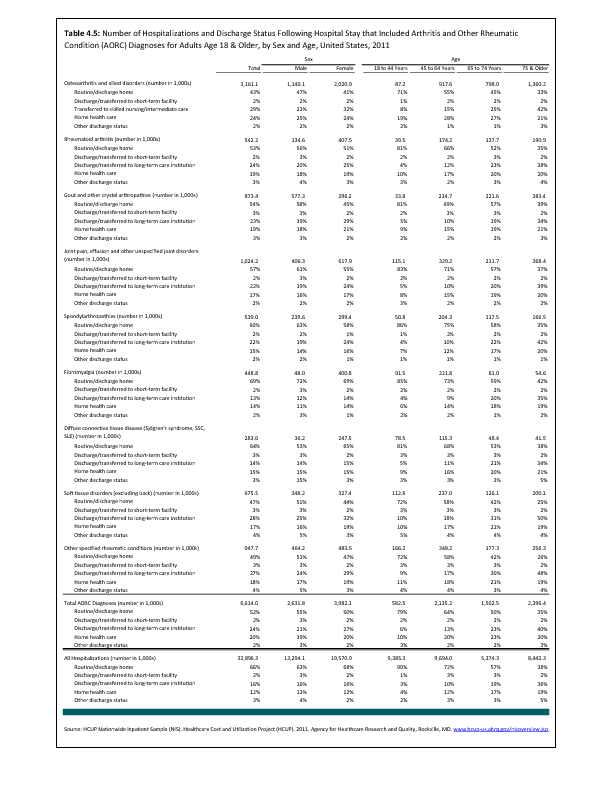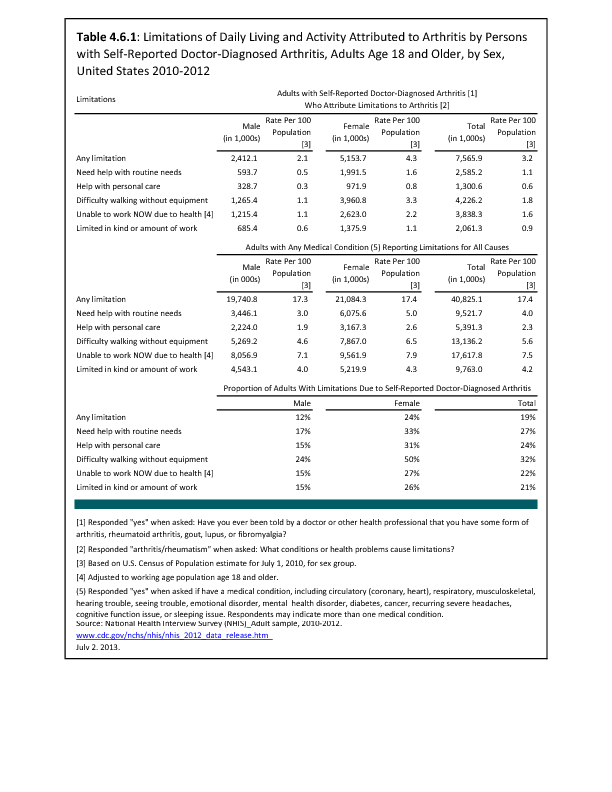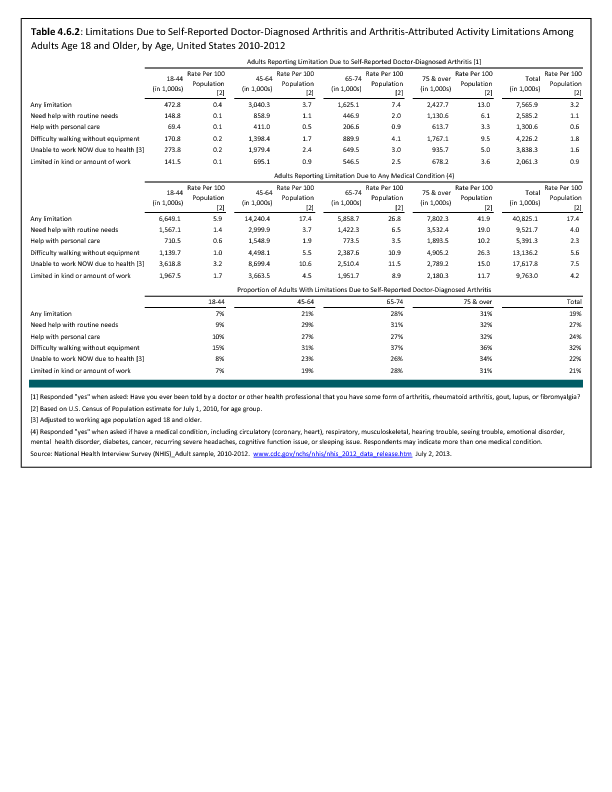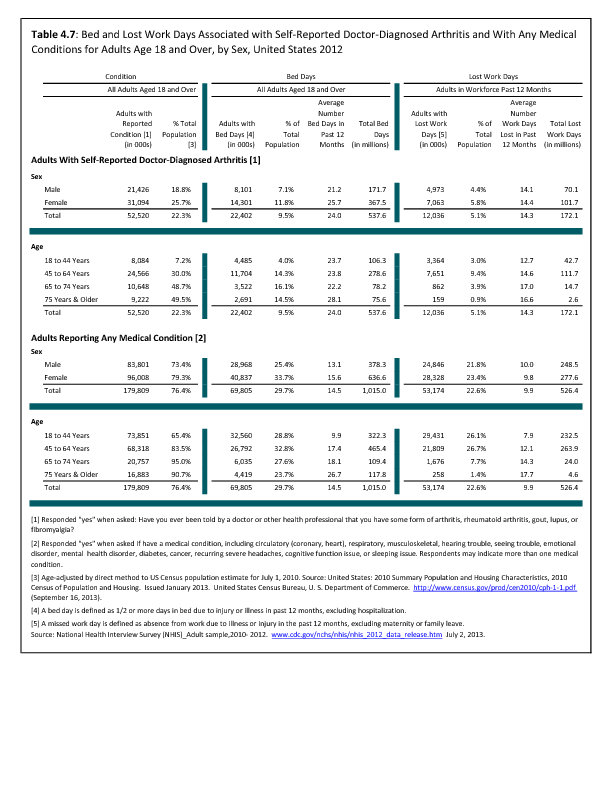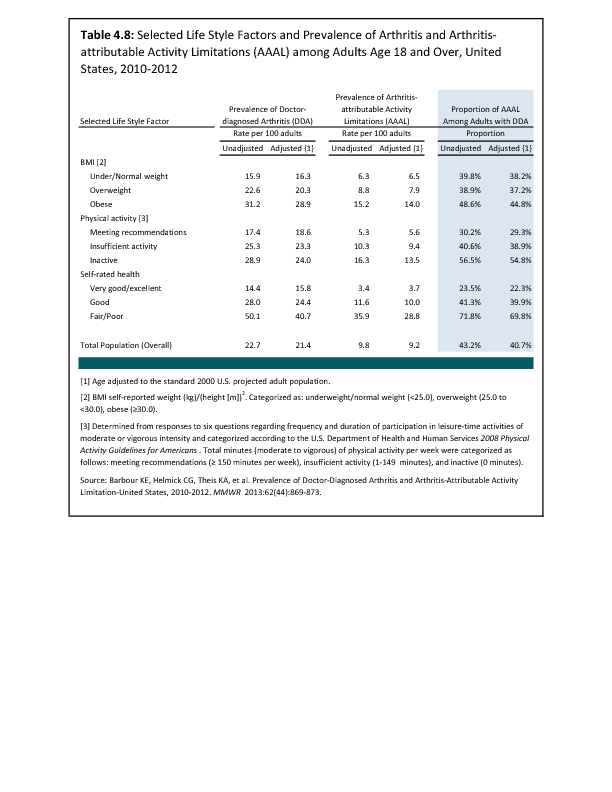While AORC occurs in children, it is difficult to get population data on them, so most of the estimates presented in this report are for adults unless otherwise noted.
Arthritis: The prevalence of arthritis in the general population is better estimated by doctor-diagnosed arthritis than by AORC. Based on self-reported data, for the years 2010 to 2012, doctor-diagnosed arthritis affected an average of 52.5 million adults based on self-reported data,1 and in line with earlier projections.2 Estimates show the typical distribution of higher prevalence among females and older adults, and lower prevalence among Hispanics and Asians. Absolute estimates show that most of these adults (62%, or 32.7 million) are age 18 to 64. (Reference Table 4.1 PDF CSV)
Specific types of AORC: Clinical data are needed to provide some measure of validity for estimating the prevalence of specific types of arthritis because many people are not sure what specific type of arthritis they have. Data from the National Arthritis Data Workgroup provided the following national prevalence estimates for 2005.3,4
Osteoarthritis: Osteoarthritis (OA) is the most common type of arthritis, characterized by progressive damage to cartilage and other joint tissues. Joint injury is a risk factor for most types of OA, but the majority of cases occur without a specific history of injury. Obesity is a risk factor for knee OA, and to a lesser extent for hip and hand OA. Clinical OA was estimated to affect 26.9 million in 2005(4) and is likely to have increased since then. The joints most affected with radiographic OA and symptomatic OA were hands, knees, and hips.4
Rheumatoid arthritis: Rheumatoid arthritis (RA) is the prototypical inflammatory arthritis. It is a chronic autoimmune disease that causes pain, aching, stiffness, and swelling in multiple joints, especially the hands, in a symmetrical fashion. In 2005, RA was estimated to affect 1.3 million adults(2), but that estimate has since been updated on the basis on newer data to 1.5 million.5
Gout and other crystal arthropathies: Gout is a recurrent inflammatory arthritis that occurs when excess uric acid collects in the body. Gout has been recognized for centuries and often affects the big toe. In 2005, an estimated 6.1 million adults reported having gout at some time, with 3.0 million affected in the past year.4
Systemic lupus erythematosus: Systemic lupus erythematosus (SLE) is an autoimmune disease in which the body’s immune system can attack many body systems, especially the skin, kidneys, and joints. In 2005, definite and suspected SLE was conservatively estimated to affect 322,000 people in the United States.3
Systemic sclerosis: Systemic sclerosis (SSc), or scleroderma, is an autoimmune disease that primarily affects the skin, but can affect any organ system. In 2005, SSc affected an estimated 49,000 adults.3
Primary Sjögren’s syndrome: Primary Sjögren’s syndrome (SS) is a syndrome of dry eyes, dry mouth, and arthritis. Secondary Sjögren’s syndrome can occur in association with other rheumatologic diseases such as rheumatoid arthritis and lupus. Prevalence data are very limited. In 2005, an estimated 0.4 to 3.1 million adults had SS.3
Fibromyalgia: Fibromyalgia (FM) is a syndrome of widespread pain and tenderness. The diagnosis is difficult to make, so relevant prevalence data are hard to come by. In 2005, FM was estimated to affect about 5 million adults.4
Polymyalgia rheumatica and giant cell (temporal) arteritis: Polymyalgia rheumatic (PMR) is a syndrome of sudden aching and stiffness in older adults that responds to treatment with anti-inflammatory medications (eg, corticosteroids). Giant cell arteritis (GCA), which often occurs with PMR, is a type of vasculitis that affects medium-size arteries and results in headache, vision loss, and other symptoms. In 2005, PMR was estimated to affect 711,000 people and GCA was estimated to affect 228,000 people.4
Spondylarthropathies: Spondylarthropathies (or spondylarthritides) are a family of diseases that includes ankylosing spondylitis, reactive arthritis, psoriatic arthritis, enteropathic arthritis (associated with ulcerative colitis or Crohn’s disease), juvenile spondylarthritis, and undifferentiated spondylarthritis. In 2005, spondylarthropathies affected an estimated 639,000 to 2.4 million adults ages 25 and older.3
Arthritis in children: Arthritis and other rheumatic conditions are relatively uncommon in children, although they can be particularly severe when they do occur. One estimate using significant pediatric arthritis and other rheumatologic conditions (SPARC) codes put the average annual prevalence at 294,000 for the years between 2001 to 2004, with codes for rheumatoid arthritis and other inflammatory polyarthropathies, allergic purpura, arthropathy associated with infections, other and unspecified arthropathies, polyarteritis nodosa and allied conditions, and rarer inflammatory conditions affecting 103,000.6
- 1. Barbour KE, Helmick CG, Theis KA, Murphy LB, Hootman JM, Brady, Cheng YJ: Prevalence of doctor-diagnosed arthritis and arthritis-attributable activity limitation—United States, 2010-2012. MMWR 2013;62(44):869-873.
- 2. Hootman JM, Helmick CG, Langmaid G: Projected prevalence of self-reported arthritis or chronic joint symptoms among persons aged greater than 65 years—United States, 2005–2030. MMWR 2003;52(21):498-491.
- 3. a. b. c. d. e. Helmick CG, Felson DT, Lawrence RC, Gabriel S, Hirsch R, , Kwoh CK, Liang MH, Maradit Kremers H, Mayes MD, Merkel PA, Pillemer SR, Reveille JD, Stone JH; National Arthritis Data Workgroup: Estimates of the prevalence of arthritis and other rheumatic conditions in the United States: Part I. Arthritis Rheum 2008;58(1):15-25.
- 4. a. b. c. d. e. Lawrence RC, Felson DT, Helmick CG, Arnold LM, Choi H, Deyo RA, Gabriel S, Hirsch R, Hochberg MC, Hunder GG, Jordan JM, Katz JN, Maradit Kremers H, Wolfe F; National Arthritis Data Workgroup. Estimates of the prevalence of arthritis and other rheumatic conditions in the United States: Part II. Arthritis Rheum 2008;58(1):26-35.
- 5. Myasoedova E, Crowson DS, Kremers HM, Therneau TM, Gabriel SE: Is the incidence of rheumatoid arthritis rising?: Results from Olmsted County, Minnesota, 1955–2007. Arthritis Rheum 2010;62(6):1576-1582.
- 6. Sacks JJ, Helmick CG, Luo Y-H, Ilowite HT, Bowyer S: Prevalence of an annual ambulatory health care visits for pediatric arthritis and other rheumatologic conditions in the US in 2001–2004. Arthritis Rheum 2007;57(8):1439-1445.
Edition:
- 2014

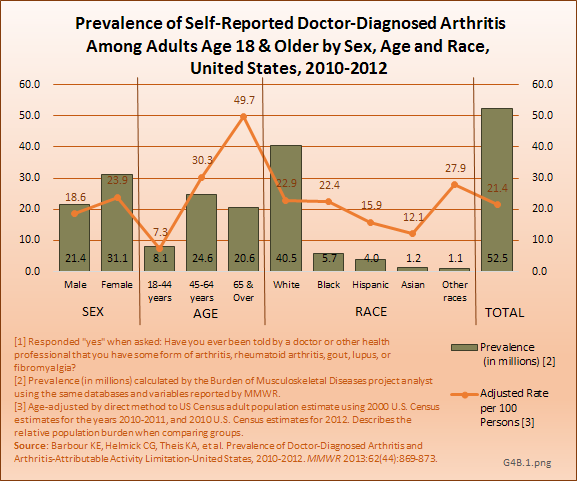
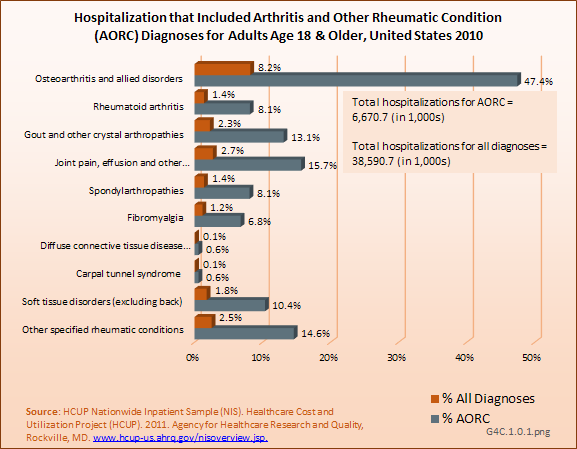
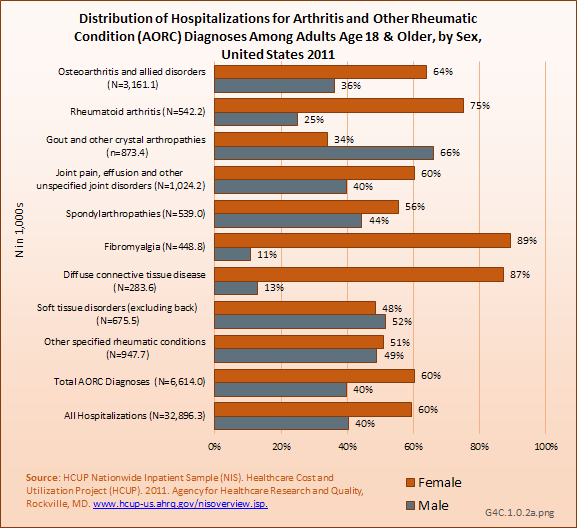
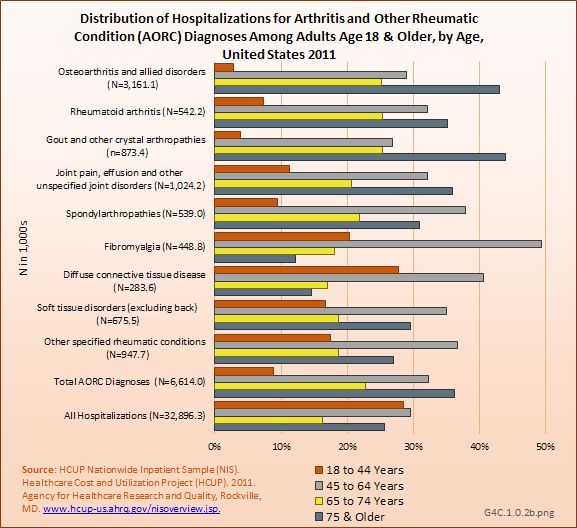
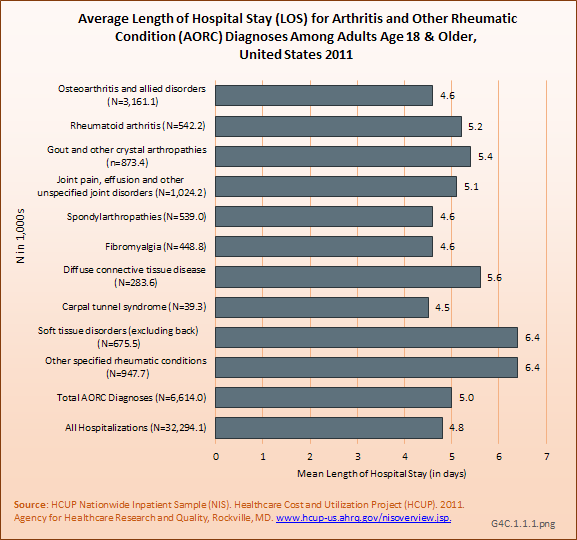
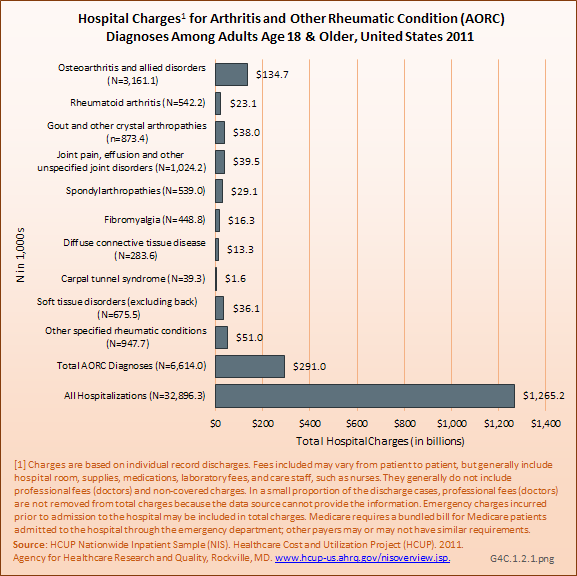
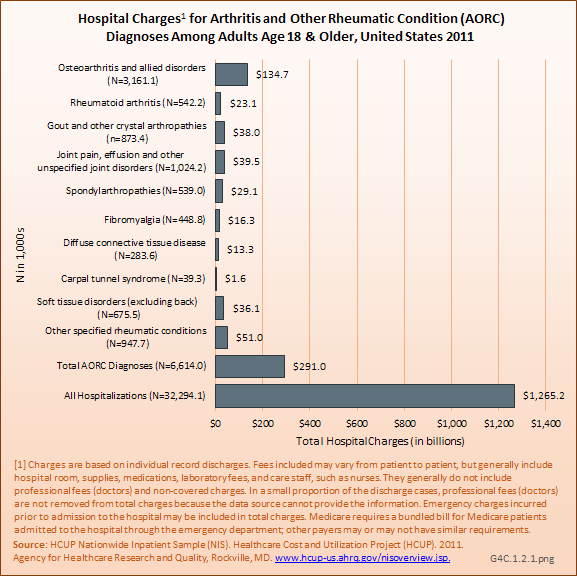
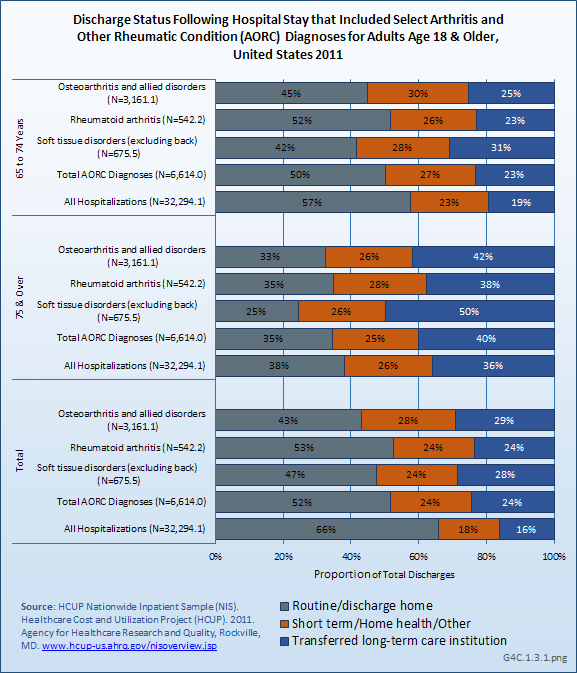
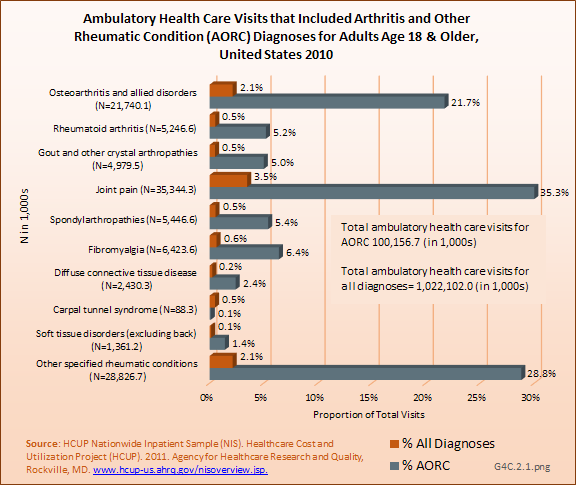
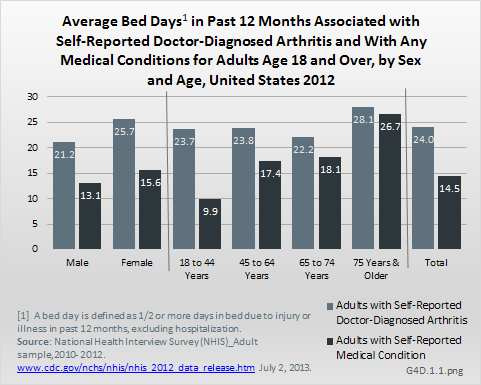
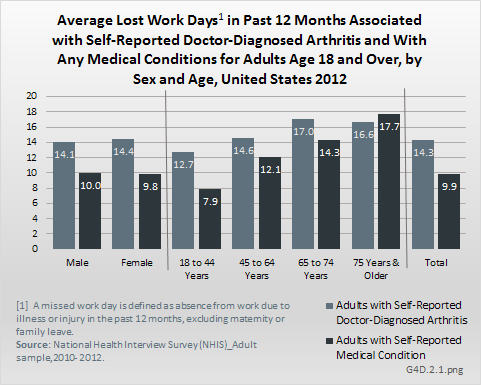
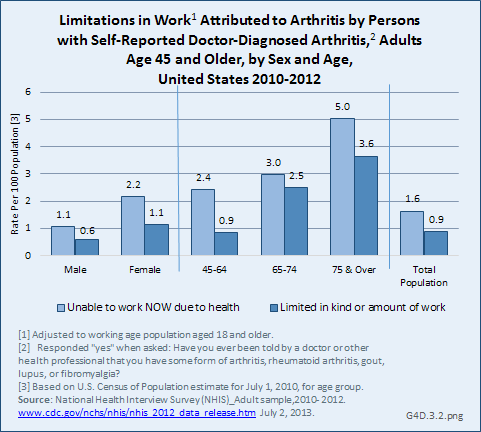
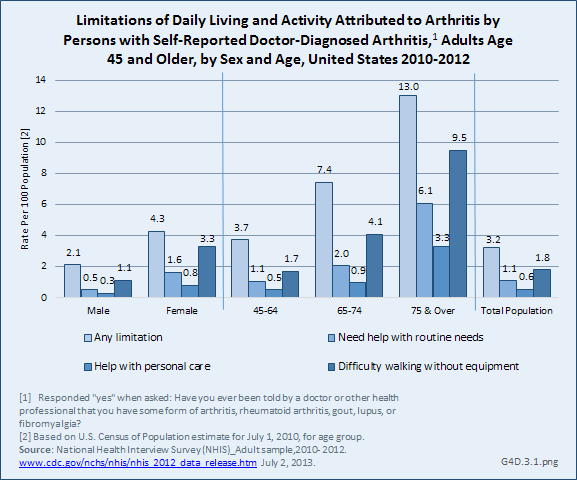
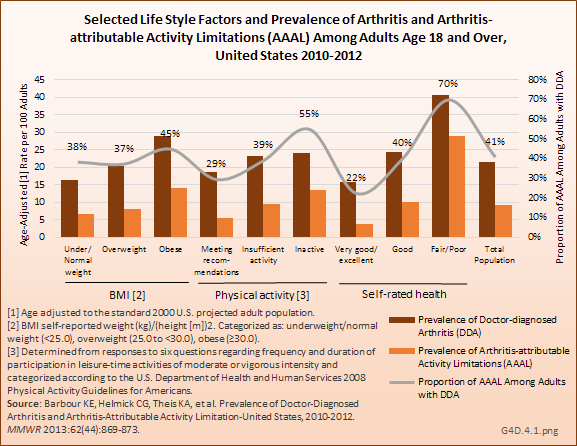

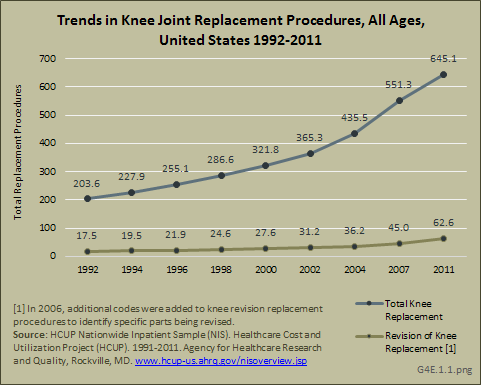
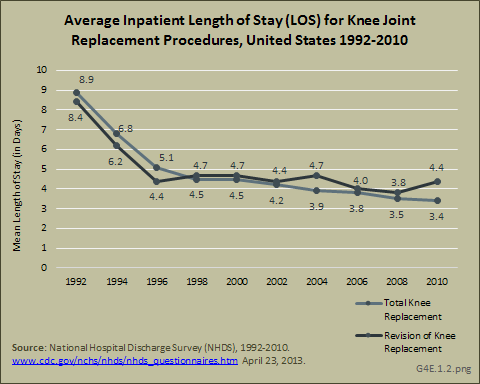
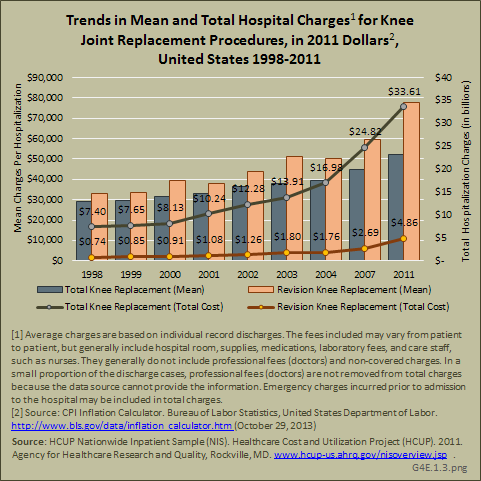

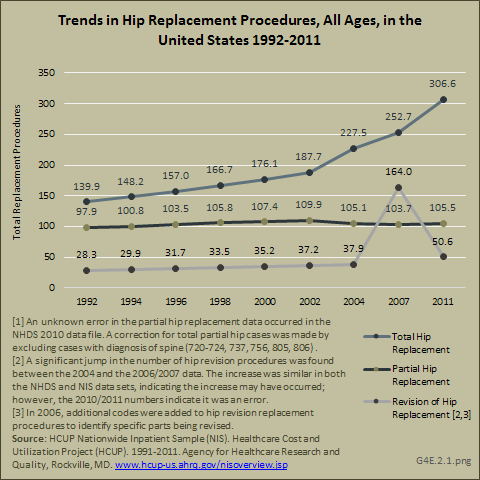
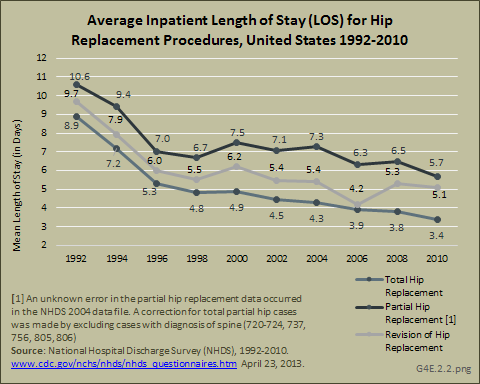

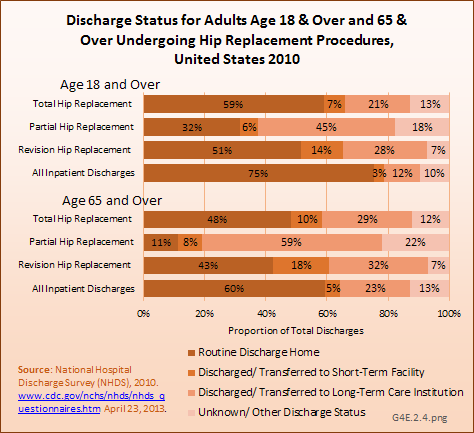
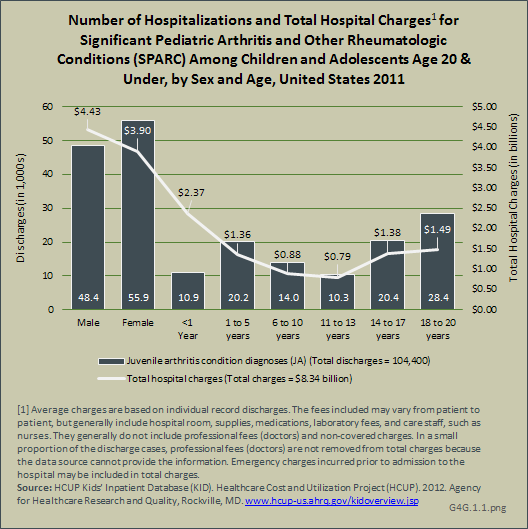
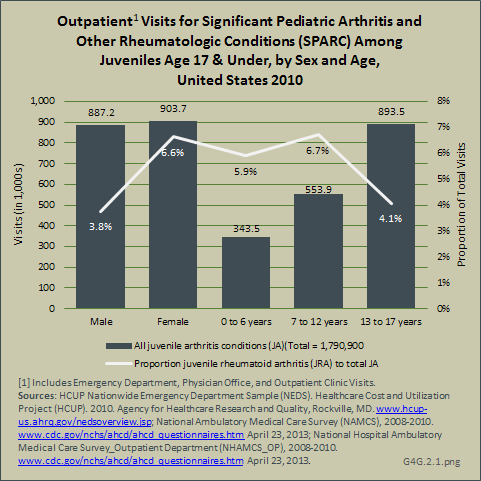
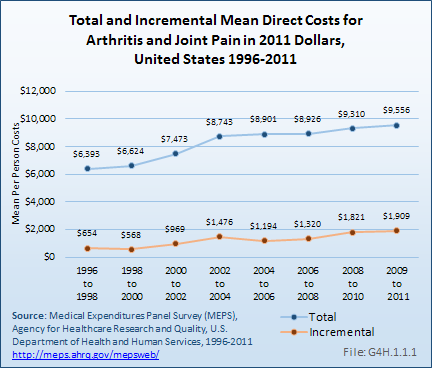
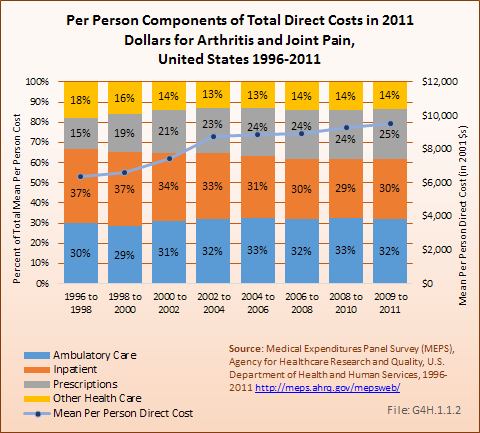
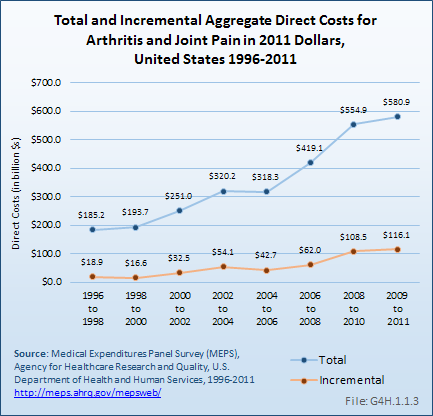
 Download as CSV
Download as CSV